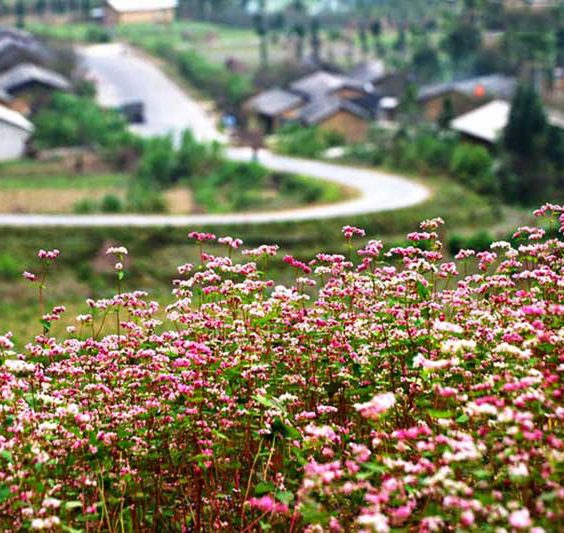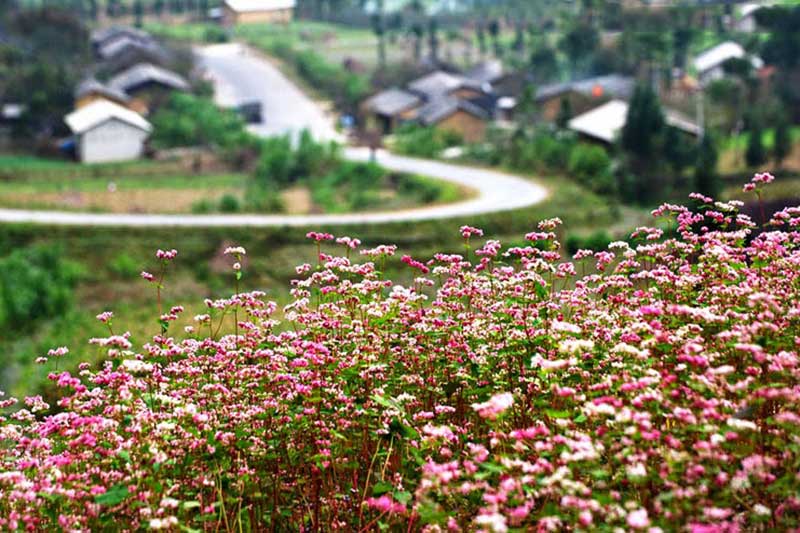Ha Giang: A detailed travel guide to Vietnam’s hidden gem
This Ha Giang travel guide has all you need to know to plan your trip to one of the most fascinating places in Vietnam. Don’t miss it!
It boasts of the most majestic and impressive natural landscapes in Southeast Asia, yet so many travelers overlook it. Ha Giang is a fascinating place where apart from an inspiring scenery, you have easy access to the most rural and authentic side Vietnam. This travel guide of Ha Giang is packed with the most up-to-date and reliable information (November 2017) to plan your trip and start making your itinerary. Let’s start!
Why go to Ha Giang?
Is Ha Giang worth it? There is no doubt that you will not fall in love with Ha Giang. So my answer is YES. DEFINITELY YES. HaGiang had been on my list for some time. I told myself that I am not leaving Vietnamwithout seeing it with my own eyes. I can’t believe I hadn’t heard of this place years ago.
Since Ha Giang is not frequently featured in itineraries to travel through Vietnam, I feel I need to explain why this was my absolute favorite destination in the country. Ha Giang province is located in the most northern part of Vietnam, about 400 km northwest of Hanoi. This remote and mysterious province is a showcase of unbelievable mountain landscapes, limestone walls, roaring rivers, smiling people and hundreds of kids. Apart from its stunning scenery, Ha Giang is a home to many different ethnic tribes like H’mongs. That is why Ha Giang is a great opportunity to peek into the rural way of living. It’s all very laid-back and serene, just how the Vietnam experience should be.
How to get to Ha Giang
How to get from Hanoi to Ha Giang
In Hanoi, you can catch a sleeper bus to Ha Giang from Mỹ Đình bus station. Buses leave almost every hour starting at 4:30 am till 1:30 pm. The night buses leave between 6 pm till 9:30 pm. The ticket should cost 200,000 dong. The bus takes about 7-8 hours, give or take, with one mid-way stop as there is no toilet in the bus.
How to get to Ha Giang from other places
We live in Hai Phong (a city right next to Cat Ba island) and you can take a night bus from a bus terminal Ben Xe Cau Rao as we did. The bus ticket cost us 250,000 dong and the journey took about 11 hours.
Things to keep note when purchasing bus tickets:
– Reserving bus tickets at hostel and hotels is the most assured way
– Be aware of fraud bus drivers at the bus station that will cheat your fares
– Buy the tickets only at the ticket counter
– If taken to the bus, do not pay before departure. The bus conductor will collect bus fares during the journey.
Best time to visit Ha Giang
Almost any time of the year is good to visit Ha Giang. There is really no best season for a motorbike ride. The hot and rainy season runs from April into October. The cold and dry season starts in November and ends in March.
Must things to see in Ha Giang
Fairy Bosom
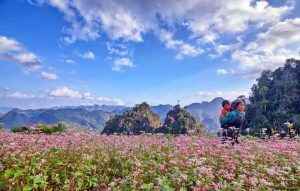
Fairy Bosom is a unique landscape with two symmetrical smooth hills. They are so charming and balanced that locals started calling them Fairy Bosom and its name dates back to ancient times and it is associated with many legends.
Heaven’s Gate

Quan Ba Heaven’s gate is located about 50 km north of Ha Giang town and it is the gateway to the geological park. Once upon a time, behind the gate was a kingdom of Hmong people with 4 districts Quan Ba, Dong Van, Meo Vac and Yen Minh. In 1939 the French built a huge wooden door, 150cm thick to divide this area from the rest. The door is no longer there, only a sign in both English and Vietnamese languages: Quan Ba Heaven’s Gate.
Lũng Cú flagpole
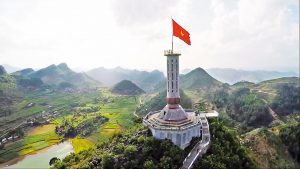
The most northern village of Vietnam called Lũng Cú, Vietnam’s North Pole. The ‘pole’ itself (entrance fee; 20,000vnđ [$1]) is a tower atop a small hill with excellent views across China from the top.
Ma Pi Leng
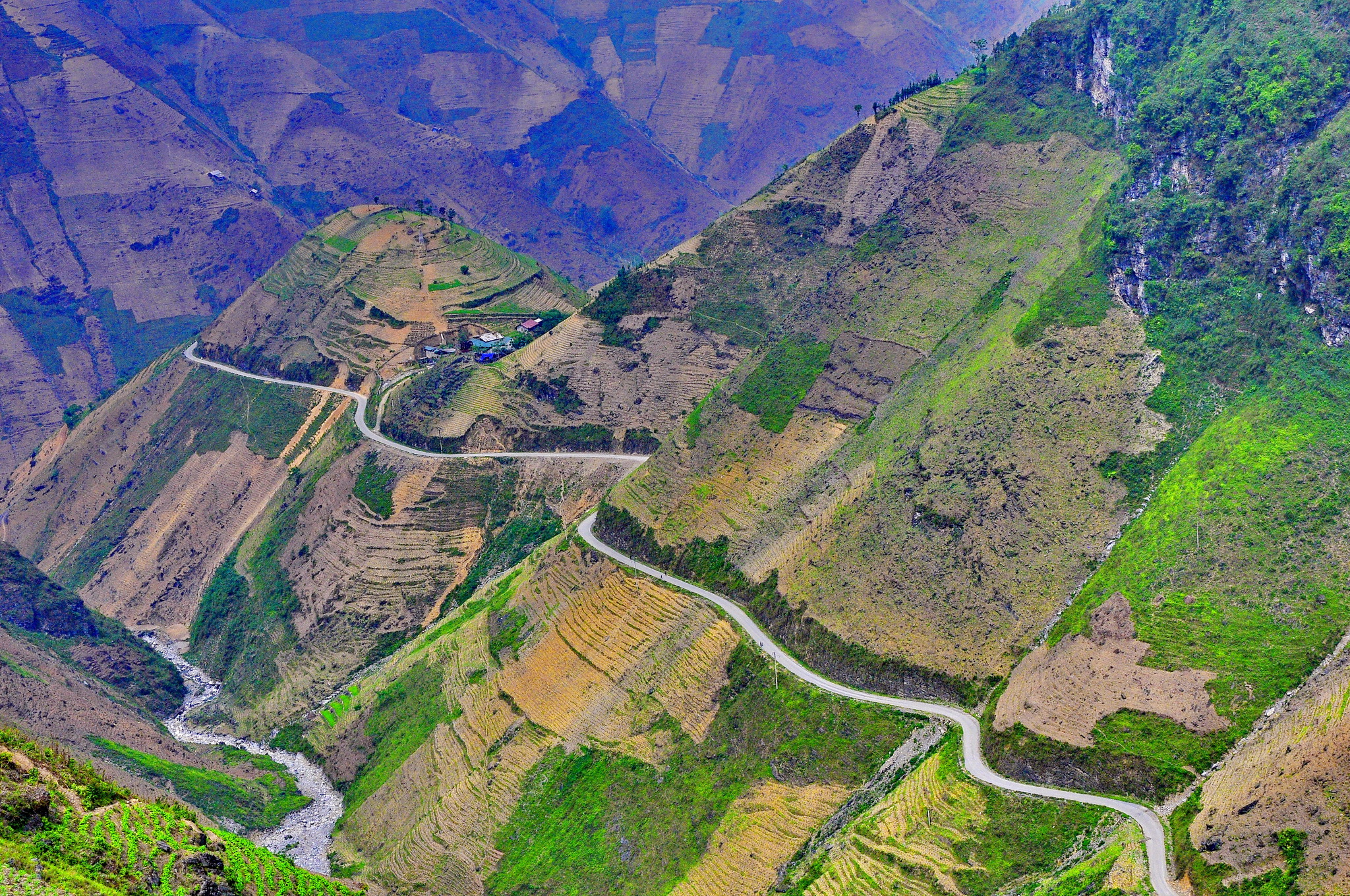
Treeless walls of limestone mountains raising hundreds of meters above the craterous Nho Que Rivervalley – it was one of the best views in my life. So worth the trip up here for the views that you may only see once in a lifetime!! I was just blown away by the scenery and endless views of the landscapes.
Getting around Ha Giang
The easiest way is to rent a bike in Ha Giang. There are few different companies to choose from, but we rented our bikes from QT Bikes & Tours. We paid 200,000 dong per day for Honda Blade, but you can choose from many more, for example,a dirt bike Honda XR for 900,000 dong. Their bikes are new and well maintained. The guys in the shop will recommend you the best tour based on the number of days you plan to stay.
Cost of things in Ha Giang (as per November 2017)
Vehicle rentals: motorbikes in Ha Giang can be rented from 150,000 dong/day.
Gasoline: depends on your bike, but we usually paid 60-70,000 dong for the full tank (Honda Blade semiauto)
Food: Local restaurants served main dishes starting at 70,000 dong. A bowl of pho (noodle soup) starts at 40,000 dong though. A big water bottle (1,5L) was around 20,000 dong.
Entrance fees: the only entrance fee we paid was at Lung Cu to get to the top of the tower and it cost us 20,000 dong.
Accommodation: I’d say you can expect to pay somewhere around 70,000 per person in a hostel or homestay and around 500,000 for a medium-quality double room.
Ha Giang Travel Tips
1. Take your time to unwind. A three-day trip is not enough to truly feel the essence of Ha Giang. Four or five days is the best. In this case, longer means better
2. Make sure you bring enough cash
3. Keep your cool when driving! You will hear a lot of honks – there are so many winy roads that it is always better to announce your presence to everyone.
4. Don’t forget to bring these things with you:
– Raincoat
– Extra socks
– Waterproof cover for your phone, camera and your documents
– Sturdy footwear/riding boots – never think of riding a motorbike in flip-flops or sandals
– Your personal medication/first aid kit
– Mosquito repellent & sunscreen
– Torch
– Earplugs (for the bus journey or for sleeping at hostels)
Source: miles-smilesaway.com
Update day: 03/10/2018
Update day: 03/10/2018


